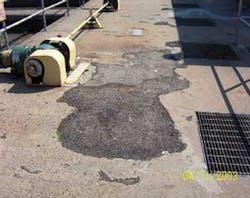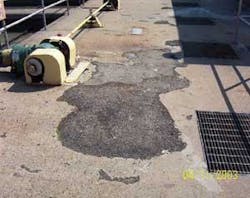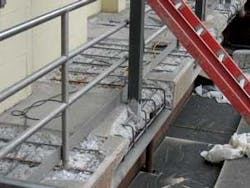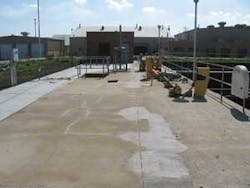Maintaining Wastewater Treatment Plant Infrastructure
by Andrew J. Vidor
With repair dollars for municipalities in short supply and service life expectancy rising, structural preservation and safety become top priorities for public works organizations. Performing a condition appraisal on concrete structures can help answer several basic questions: What, if any, are the problems? How do we fix them? What are the short and long-term costs to perform the maintenance?
A condition appraisal is a “health report” of a concrete infrastructure. Delaying or ignoring deterioration can have serious financial and operational impacts for wastewater treatment plant owners and operators. A collaborative effort between the public works team and the restoration consultant can minimize those impacts on the bottom line.
The City of Grand Rapids, MI, has invested nearly $350 million over the last 20 years to construct, repair and maintain its wastewater treatment plant (WWTP) infrastructure for approximately 300,000 customers that reside within 200 square miles of developed land in the greater Grand Rapids area.
“The restoration project was a substantial undertaking for Grand Rapids, particularly in terms of funding,” said Randall Fisher, environmental services director for the City of Grand Rapids. “We all knew it needed to be done. The alternative would have been to avoid the problems at hand, which could have resulted in larger deterioration down the road.”
The city has worked with Walker Restoration Consultants for professional restoration engineering services for the past 20 years. Recently, Walker performed condition appraisals, prepared construction documents and provided construction engineering services for a total of 10 of the WWTP’s critical infrastructure process structures, two of which are described in detail below. Both structures began with a condition appraisal and have completed restoration.
Primary Settling Tanks
The plant’s C-Section and D-Section primary settling tanks were constructed in the late 1970s and are the newest of the primary clarifier tanks at the WWTP, with maximum flow capacity of 100 mgd. Deterioration of the concrete walkways that extend over the influent and effluent channels was a concern. Though concrete spalling was occurring at these tanks, only partial depth concrete repairs were deemed necessary. Other waterproofing measures were installed to protect adjacent leaking tunnels from causing damage to process equipment.
Field surveys of the structures were completed by Walker to determine and quantify the types of deterioration and their associated causes. A materials testing program of the concrete structures was also employed to determine the level of deterioration and concrete properties. Repair options and their associated costs were developed and presented to the WWTP for selection. The recommendations considered such factors as, age of structure, type of deterioration, expected service life of the structures, cost, useful life of repair materials, intended future use of the primary clarifier tanks, and constraints provided by the wastewater treatment plant that affected operations of the facility.
The appropriate construction materials specific to the project were evaluated and selected. Concrete designed specifically for repairs was used to address the concrete deterioration of the tanks. Waterproofing products such as new caulk and coatings were applied to protect the concrete and tunnels below the walkways. The repairs were completed during the summer months, when temperature and weather conditions were more favorable.
The restoration project included many operational considerations that were identified in the contract documents as WWTP flows could not be halted for long durations during the construction phase. Plant flows were diverted from two chambers in the tanks at one time and required that repairs be completed in a two-week period. To complete repairs in this short time, engineering considerations were made for the repair design and materials selection. The contractor’s construction schedule and repair process was also carefully planned.
“One of our biggest challenges during the restoration process was identifying ways to avoid disruptions to normal plant operations,” said Fisher. “We solved this by shutting down two tanks simultaneously, allowing us to retrain the necessary flow capacity for the other tanks at the plant.”
Another challenge for the contractor was embedded conduits in the concrete slab. An electrical sub-contractor was on site during the majority of the demolition to repair and provide temporary power to the process equipment, since conduits were exposed or damaged. Other operational considerations included the protection of process equipment that remained in service as restoration took place directly adjacent to the equipment.
These projects merely scratch the surface of the extensive work performed at the city of Grand Rapids Wastewater Treatment Plant. The close working relationship between the city, the Environmental Services Department and Walker Restoration enabled these projects to be completed in a successful manner. The Grand Rapids Wastewater Treatment Plant is developing a concrete asset management program which will result in better maintained concrete structures and an extended useful lifespan resulting in greater process reliability.
“Concrete restoration is helping the City of Grand Rapids to extend the lives of our concrete assets,” said Fisher. “The most impressive aspect of the restoration program has been the city’s ability to remain fiscally responsible to our taxpayers by maintaining control over the costs needed to fund these types of projects.”
About the Author:
Andrew J. Vidor is a design engineer for Walker Restoration Consultants, which provides specialized consulting, engineering, and restoration and preservation strategies and services. Its services include investigations, assessments, repair design, and capital-improvement/protection programs. For more information, visit the company’s Web site at www.walkerrestoration.com.



